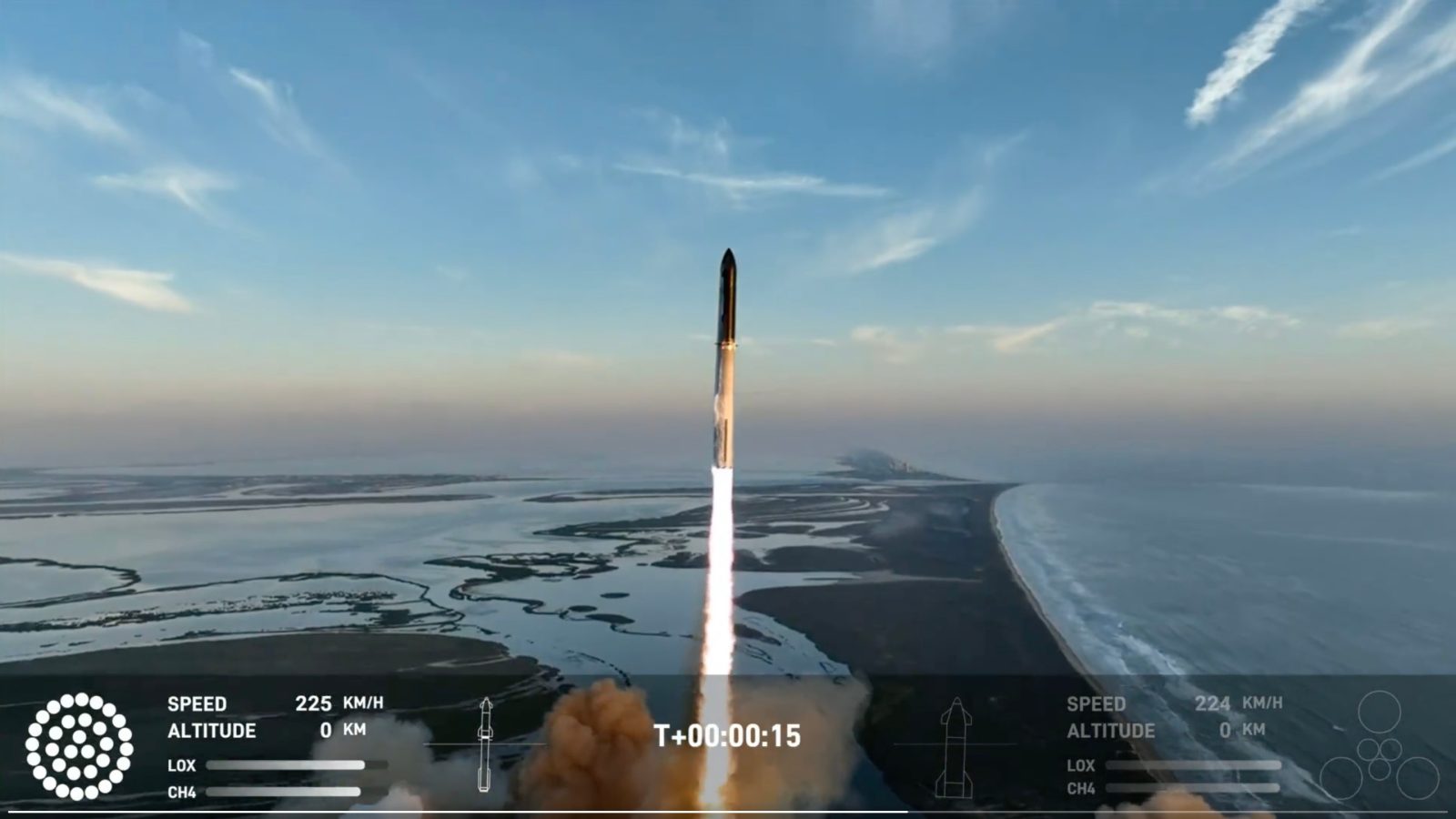
SpaceX launched its second flight test of its Starship rocket Saturday morning, only a few minutes into its 20 minute window. On all accounts, the flight was a resounding success, even if both stages got a little… explosive.
Here’s a breakdown of everything we think went wrong.
Starship launches and makes it through staging
At about 7:04 A.M. CT, Starship lifted off from its launch mount down at SpaceX’s Starbase facility. This time all 33 Raptor engines making it through the majority of flight, through max q (the maximum point of aerodynamic pressure), and right up to hot staging.
The goal of this flight was to get through hot staging, a change made after April’s inaugural flight of Starship that did not make it past this point. For Flight 2, Starship nailed it. Hot staging began at 70 km in the air with the Super Heavy booster shutting down most of its engines and the second stage igniting the three Raptor Vacuum engines.
After a couple of seconds, the two spacecrafts where now apart, with the Starship second stage igniting its final three engines to start its journey to space.
At this point, Starship was in extra innings. Anything that happened after this point was just extra credit.
Join our Discord Server: Join the community with forums and chatrooms about space! Also, directly support us via a Server Subscription!
Super Heavy’s demise
Hot staging is a very violent and intense forming of staging where the second stage’s engines ignite before the two stages physically detach. This required the booster to receive both shielding to its top dome and an extra separating ring filled with vents.
After staging, the booster attempted to complete its boost back burn, flipping 180 degrees by shutting down engines on one side of the booster. Sadly, Booster 9 didn’t survive much longer, experience some sort of fault and being ripped apart by aerodynamic forces.
However, the booster did its job and SpaceX expected it could run into some trouble post staging. The data will be reviewed and used to make the booster better for flight 3.
Starship’s journey to space
While its booster was getting… explody, the Starship second stage continued on like it was normal. Now way past what it did during flight 1, Starship made it to an altitude of 148 km, well past the boundary of space.
The vehicle almost made it to the end of its burn before SpaceX lost all data coming from the vehicle. SpaceX believes Starship’s automatic flight termination system was trigger, but will have to wait for more data to figure out why that happened.
So now what?
This was an absolute major moment for SpaceX, NASA, and humanity as the company works on getting its vehicle operational.
Most likely SpaceX will have to go through another investigation with the FAA to determine what went wrong and if it’s safe to fly again. The FAA only gave SpaceX permission to launch once with its amending launch license so even if it was successful, the FAA would have needed to get involved.
So who knows when Starship will launch again, the investigations could take weeks or months. However, SpaceX is pretty hardware rich still, so having another rocket ready to fly won’t take long.
FTC: We use income earning auto affiliate links. More.

Comments